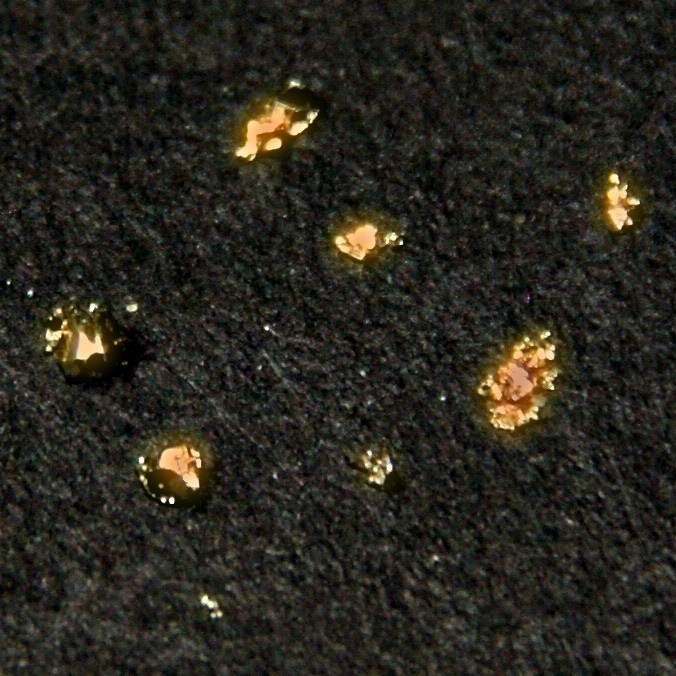Californium
98
Cf
Grupp
Ej tillämplig
Period
7
Block
f
Protoner
Elektroner
Neutroner
98
98
153
Generella Egenskaper
Atomnummer
98
Atommassa
[251]
Masstal
251
Kategori
Aktinider
Färg
Ej tillämplig
Radioaktiv
Ja
Named after California and the University of California
Kristallstruktur
Enkelt hexagonalt
Historia
Californium was discovered by Stanley G. Thompson, Kenneth Street, Jr., Albert Ghiorso and Glenn T. Seaborg in 1950 at the University of California, Berkeley.
It was produced by the bombardment of curium with alpha particles.
Californium was isolated in macro quantities for the first time by Burris Cunningham and Stanley Thompson in 1958.
It was produced by the bombardment of curium with alpha particles.
Californium was isolated in macro quantities for the first time by Burris Cunningham and Stanley Thompson in 1958.
Elektroner per skal
2, 8, 18, 32, 28, 8, 2
Elektronkonfiguration
[Rn] 5f10 7s2
Californium is produced in nuclear reactors and particle accelerators
Fysikaliska Egenskaper
Aggregationstillstånd
Fast
Densitet
15,1 g/cm3
Smältpunkt
1173,15 K | 900 °C | 1652 °F
Kokpunkt
-
Smältvärme
Ej tillämplig kJ/mol
Ångbildningsvärme
Ej tillämplig kJ/mol
Specifik värmekapacitet
- J/g·K
Förekomst i jordskorpan
Ej tillämplig
Förekomst i universum
Ej tillämplig

CAS-nummer
7440-71-3
PubChem CID-nummer
Ej tillämplig
Atomära Egenskaper
Atomradie
-
Kovalent radie
-
Elektronegativitet
1,3 (Paulingskalan)
Jonisationspotential
6,2817 eV
Molvolym
18,4 cm3/mol
Värmeledningsförmåga
0,1 W/cm·K
Oxidationstillstånd
2, 3, 4
Användningsområden
Californium is used as a portable neutron source for discovery of metals such as gold or silver by on-the-spot activation analysis.
Neutrons from californium are employed as a treatment of certain cervical and brain cancers where other radiation therapy is ineffective.
Neutron moisture gauges use californium-252 to find water and petroleum layers in oil wells.
Neutrons from californium are employed as a treatment of certain cervical and brain cancers where other radiation therapy is ineffective.
Neutron moisture gauges use californium-252 to find water and petroleum layers in oil wells.
Californium is harmful due to its radioactivity
Isotoper
Stabila isotoper
-Instabila isotoper
237Cf, 238Cf, 239Cf, 240Cf, 241Cf, 242Cf, 243Cf, 244Cf, 245Cf, 246Cf, 247Cf, 248Cf, 249Cf, 250Cf, 251Cf, 252Cf, 253Cf, 254Cf, 255Cf, 256Cf